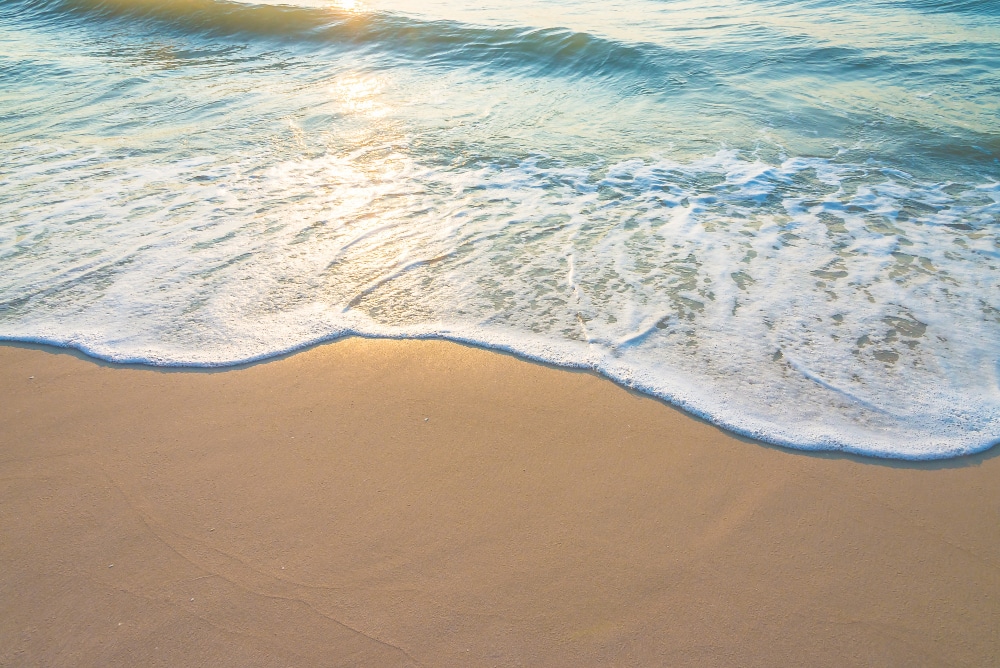As the temperatures soar, the allure of the beach becomes irresistible. But before you dip your toes in the sand and surf, you must familiarize yourself with crucial safety guidelines. This comprehensive guide will equip you with vital safety tips for an enjoyable, incident-free beach experience.
Ah, the beach—those beautiful expanses of sand and surf that promise endless relaxation and fun. As alluring as beaches are, they come with unique hazards, from unpredictable ocean currents to intense UV exposure. This guide covers everything you need to know about staying safe on beach outings.
Water Safety: Don’t Dive In Without These Tips

Swim in Designated Areas
Swimming in lifeguard-patrolled zones isn’t just a suggestion—it’s an absolute must for ensuring your safety and that of your family. Lifeguards are trained professionals who spot dangers that are not immediately apparent to beachgoers. They’re there to assist in emergencies and ensure safe swimming conditions.
Buddy Up for Safety
The buddy system is not just a precautionary measure for children but also a wise practice for adults. Swimming with a friend lets you watch for each other, doubling your safety. Having another set of eyes looking for potential hazards is always good.
Decode the Danger: Understanding Rip Currents
Rip currents are the ocean’s deceptively tranquil-looking but dangerous lanes of water that can pull even the most experienced swimmers out to sea. Learning to identify rip currents, usually visible as darker patches of water moving seaward, is crucial. If caught in a rip current, swim parallel to the shoreline until you break free rather than attempting to swim back to shore against the current.
Sun Protection: Shield Yourself from the Sun
Apply and Reapply Sunscreen
Choose a broad-spectrum sunscreen with a minimum SPF of 30. Apply generously on all exposed skin, and don’t forget areas like the back of your knees and ears. After swimming, towel-drying, or sweating, reapply your sunscreen to ensure continuous protection.
Cover-Up Essentials
Protective clothing and sunscreen offer another layer of defence against harmful UV rays. Invest in swim shirts with UV protection, and always wear a wide-brimmed hat and UV-protected sunglasses. The peak sun-intensity hours are usually between 10 a.m. and 4 p.m., so extra caution during these hours is advised.
Environmental Awareness: Know Before You Go

Tide Timing
The ocean is constantly changing, and tides are its most evident and predictable shifts. Knowing when tides will be low or high can affect everything from how much beach space is available for lounging to the safety of swimming and surfing. Always check local tide charts before you go.
Marine Life Safety
Certain marine animals, like jellyfish, sea urchins, or sharks, can pose risks. Familiarize yourself with the types of marine life you may encounter and how to react to potential stings or bites. Local authorities often provide up-to-date information on maritime life activity.
General Safety: Essentials You Can’t Ignore
Stay Hydrated
While the ocean surrounds you, it’s not drinkable. Bring ample water to stay hydrated, especially on hot days. Dehydration can lead to various health issues, from mild headaches to severe heatstroke.
Footwear Matters
Good water shoes can protect your feet from hot sand, sharp shells, or hidden rocks. It’s a small investment that can prevent painful injuries and make your beach day more enjoyable.
Personal Belongings: Secure Your Stuff
Valuables
Leaving your valuables unattended while you take a swim is risky. Invest in waterproof bags or pouches to keep your essentials like phone, money, and keys safe and dry.
Keep an Eye Out
Pick a spot on the beach where you can easily see your belongings while you’re in the water. Alternatively, take turns with your buddy or family to stay with the belongings while others enjoy the water.
Communication: Be In The Know
Local Beach Rules
Each beach has its own set of rules, such as dog policies, alcohol consumption, and campfire regulations. Familiarize yourself with these guidelines to avoid surprises and penalties.
Know Your Flags
Understanding the colour-coded flags on the beach can be a lifesaver. Red usually means hazardous conditions, yellow signifies moderate conditions, and green indicates safe to swim. Always heed these signals.
Etiquette and Respect: Leave Only Footprints
Clean Up
Be a responsible beachgoer by cleaning up after yourself. Many beaches provide recycling and trash bins. Use them.
Wildlife
If you’re lucky to encounter local wildlife, maintain a respectful distance. Disturbing or feeding nature risks your safety and harms the animals.
Conclusion
Beach outings are a hallmark of summer fun, and with the right safety measures in place, they can create lasting, happy memories. Arm yourself with the knowledge in this guide, and you’re all set for a safe, enjoyable time on the sand and in the surf.